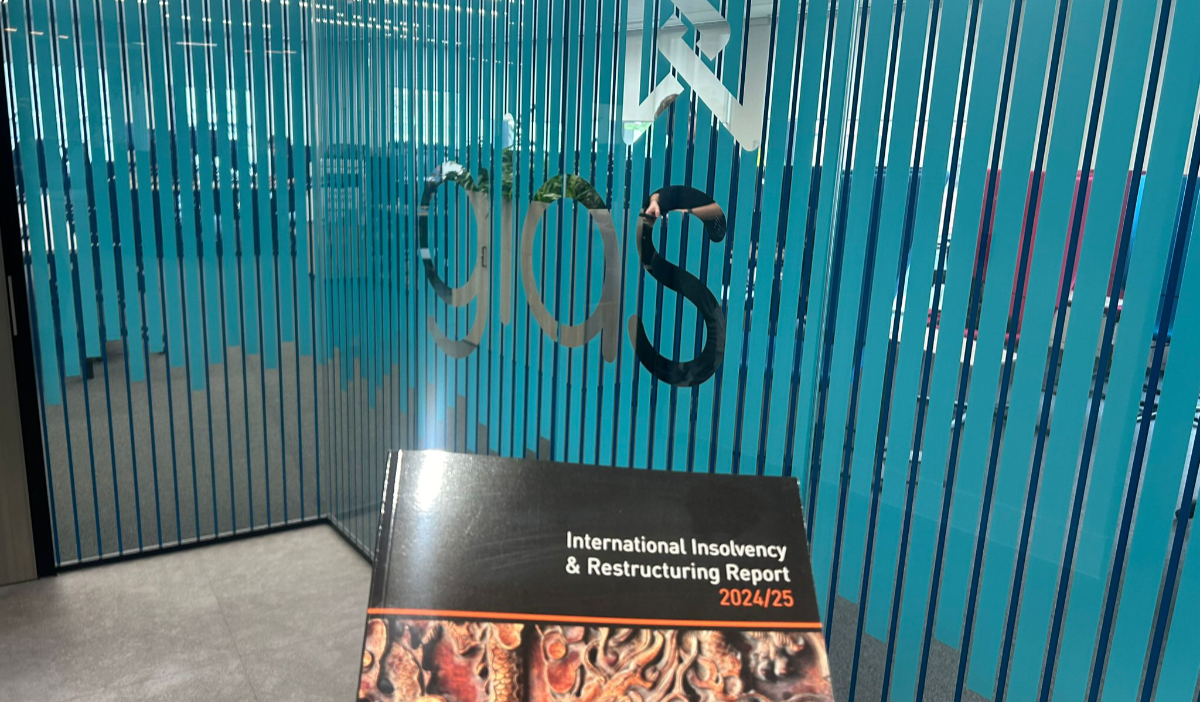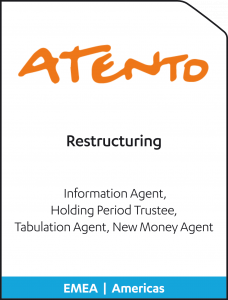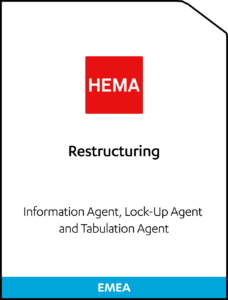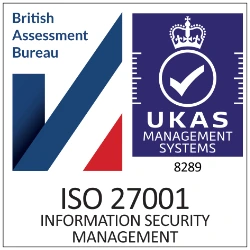
Lock-up arrangements in debt restructurings and the role of a Lock-up Agent

Lock-up arrangements in debt restructurings and the role of a Lock-up Agent
By Adam Woollaston, GLAS
Securing the buy-in of creditors (and shareholders, if applicable) is pivotal for a debt restructuring.
Lock-up agreements are commonplace in the market, front and centre as the means of incentivising creditors to vote favourably in advance of more formal restructuring steps so the company that is proposing a restructuring ensures that it has sufficient creditor support before launching costly or time-intensive restructuring proceedings.
Lock-up arrangements 101
Where a company is experiencing financial difficulties, it may decide to embark on negotiations with its creditors with the objective of consensually agreeing a restructuring of its financial indebtedness and equity.
Entering into lock-up arrangements can be one of the first things that a company does. This gives a debtor a level of certainty as to the amount of support it will receive from its creditors, before launching the restructuring.
That means entering into a lock-up agreement (sometimes called a restructuring support agreement or framework agreement).
This will be driven by the company and an “ad hoc group” of senior lenders and/or bondholders who hold a portion of the highest-ranking debt of the company, that is usually fairly significant in proportion to the company’s aggregate amount of indebtedness under any number of financing arrangements.
The principal purpose of the lock-up agreement is to “lock-up” the debt of the creditors, allowing them to expressly support the forthcoming restructuring.
In other words, the creditors agreeing to the lock-up undertake not to take any action to accelerate or sell their debt and ties them into the relevant steps of the proposed restructuring as proposed and documented in a steps plan.
For their trouble, the acceding creditors may be incentivised to sign-up to the lock-up by the offer of a fee which may be smaller or bigger depending on how quickly they agree to lock-up.
The Lock-Up Agent is a key figure to help facilitate the lock-up arrangements at the beginning of the restructuring process. GLAS has performed this role for many different types of company and in relation to many different kinds of debt structures. The lock-up will be coordinated by the Lock-Up Agent and more often than not, run outside of the clearing systems (if dealing with cleared notes).
Setting up the Lock-Up Agent role
Perhaps somewhat counter-intuitively, at least on the face of it, the Lock-Up Agent is not always (or even often) a party to the lock-up agreement itself.
This is largely a quirk of how parties conduct these kinds of processes (and may be owing to the fact that the Lock-Up Agent may only be brought in a little further down the line when the plan for the restructuring has been established).
But this underlines the importance of having a separate agreement setting out the responsibilities of the Lock-Up Agent– essentially, if the Lock-Up Agent is not a party to the lock up agreement itself, there will be various matters that are stated to be the responsibility of the company which are then effectively sub-contracted to the Lock-Up Agent.
At GLAS, our focus is to be crystal clear at the outset of the relationship what the parties expect of us, and we agree an engagement letter (with a detailed scope) upfront on that basis.
That also has the advantage of getting the Lock-Up Agent role established early so that we can set-up our online platform – the “GLAS Gateway” – quickly.
The GLAS Gateway becomes the key tool for the parties signing up to the lock-up arrangements. It allows creditors to access and download documents at their convenience and return signature pages to accession deeds or other documents, if needed.
Our “GLAS Dashboard” also enables counsel to access the status the lock-up process, giving them real time data on whether certain required thresholds have been reached.
Innovative uses of technology of this sort (something GLAS is very proud of) can be a real boost to the lock-up process, taking considerable burden away from the other parties.

Accessions
Managing accessions to the lock-up agreement is probably the central aspect of the Lock-Up Agent’s role, so it is worth lingering on this topic for a moment. If there is an ad hoc group of lenders or bondholders which are closely working with the company on a restructuring, they will accede to the lock-up agreement on day one.
But they will not represent the entirety of a company’s pool of creditors – all the other creditors of the company will then be invited to accede.
From the Lock-Up Agent’s perspective, it is crucial that when a creditor submits an accession letter (which is the operative document under which that acceding creditor agrees to the lock-up), that creditor also provides satisfactory evidence of their ownership of the relevant debt.
This can be more nuanced than one might think.
For example, if a creditor is in the process of selling their debt, evidence that a creditor has merely agreed a trade with an incoming purchaser may not be enough to establish that such incoming purchaser is entitled to participate in the lock-up and benefit from the fees that incentivise it to do so.
In many ways, better evidence is that the trade has actually settled – otherwise, not only is the Lock-Up Agent potentially at risk of granting rights to a party who is not technically entitled to those rights (legally speaking, they would not be considered part of the creditor group notwithstanding that the commercial understanding may be different), but the process can become unfair to creditors who are fully paid up members of the group.
Practically speaking, it can also be quite unwieldly to include incoming purchasers with unsettled trades in the lock-up. The entitlements of those incoming purchasers may or may not change over time depending on whether settlement of the relevant trades take place or not.
There could also be unanswered questions around who gets the lock-up fees (and when such fees are paid), plus not inconsiderable uncertainty as to whether incoming purchasers with unsettled trades should be counted towards the required consent thresholds. In our experience here at GLAS, it is best to keep things simple.
Entering into a restructuring, and a lock-up as the first step on that path, can be a fairly time-pressured and fraught stage of a company’s life cycle with a knock-on effect for its creditors.
A quicker and more streamlined process is helpful to the wider lock-up transaction and the objectives of the company and the investor group as a whole.
So, GLAS only take settled positions.
When there is a trade between locked-up creditors, both parties (seller and purchaser) are party to the accession letter to record the trade and we do not add the acceding creditor to the lock-up until we have received that confirmation.
One last thing from the perspective of the Lock-Up Agent when it comes to accessions: SSI, call-back details and know your customer data are also key bits of operational information that will need to be provided if creditors that International lock-up are entitled to lock-up fees (see below), so adequate provision for that should be made somewhere (in the accession letters or the lock-up agreement itself).
Lock-up fees
The lock-up fee regime is a crucial element of any lock-up process.
There is often a concept of a tiered system of “early bird” fees which incentivises creditors to sign-up to the lock-up arrangements sooner rather than later. One thing GLAS will focus on as a priority when working on a lock-up agreement is to understand the deadlines and commercial criteria for these fees.
One hot commercial topic we’ve come across, for example, is the extent to which a lock-up fee travels with the sale of a portion of debt to the incoming lender purchasing that debt.
In our experience, it is one thing to have those deadlines and the different tiers of “early bird fees” set out neatly in the contract. But in practice, given the cut and thrust nature of a restructuring and a related lock-up, it may be that lenders come forward after the carefully calibrated requirements of a lock-up agreement have technically expired.
It may not be in everyone’s interest to exclude latecomers to the party. So we would usually have a conversation with the company at the outset to understand what the plan would be if any creditors did come forward after the expiry of any incentive periods in which a lock-up fee is offered.
If the parties are willing to show flexibility in those circumstances, GLAS is only too happy to help facilitate a more fulsome take-up rate to the lock-up.

Codere (2024)
After an initial restructuring in 2020 involving (among other things) a Scheme of Arrangement, and a further restructuring in 2021 and 2022, this Spanish multinational group in the private gaming sector conducted an additional restructuring im 2023- GLAS acted in multiple roles on each transaction, including lock-up agent.

Atento (2023)
GLAS acted in various roles (including lock-up agent and information agent) in connection with a 2023 UK restructuring plan for Atento, one of the world’s largest providers of customer relationship management and business outsourcing services and an industry leader in Latin America.

Hema (2020)
HEMA Group engaged GLAS to work on its complex debt restructuring in 2020, in which its debt was more than halved and its liquidity position greatly improved with an additional bond financing of €42m made available to the company.
Conclusion
The Lock-Up Agent is an important player for maintaining the momentum of a lock-up process and facilitating the early stages of a restructuring.
A good Lock-Up Agent, like GLAS, will be proficient in managing the administrative aspects of the role (including use of technological solutions like an online platform). They will also be well-versed in the nuances involved in lock-up arrangements, which may arise from things like different types of creditor groups (we have seen lenders, bondholders, shareholders and landlords, to name a handful), lock-up and consent fees, and transfer issues.
















